At first glance, managing both diabetes and a bowel stoma might seem challenging. However, in this blog, dietitian, Laura Coster, shares her expert tips on how to care for both conditions simultaneously.
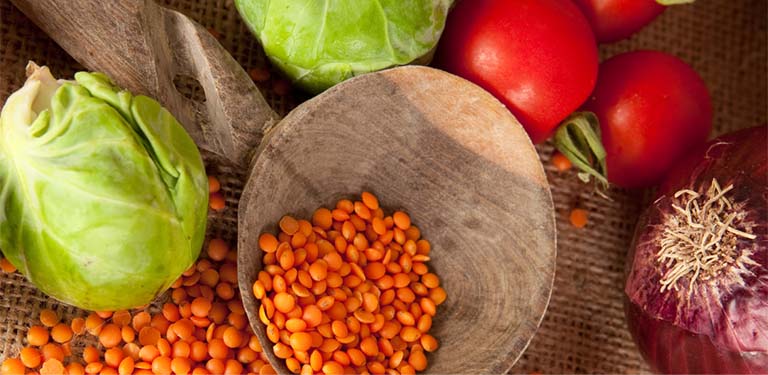
Please note: The advice provided in this blog is meant to complement, not replace, any guidance from your own medical professional. If you require additional support, we encourage you to consult your GP for further assistance.
What is Diabetes?
Diabetes is a condition that affects how the body processes sugar in the blood. It can sometimes make it harder for the body to use sugar effectively, leading to higher sugar levels. This can result in various challenges such as fatigue, changes in vision, nerve issues, and potential complications with kidney health.
What is the diet advice for Diabetes and why?
The advice provided can assist in maintaining stable blood sugar levels and minimizing the risk of potential damage and long-term complications.
For individuals managing diabetes, it is often recommended to limit the consumption of high-sugar or highly processed foods and beverages, such as fruit juice, sweets, crisps, and foods with excessive batter or pastry. Instead, incorporating high-fiber foods into the diet is generally encouraged. This can include options like granary bread, vegetables, beans, lentils, nuts, and seeds. These choices can support overall health and well-being when managing diabetes and promoting stable blood sugar levels.
What is the diet advice for bowel stomas and why?
The advice varies depending on your stoma type, but it generally aims to help normalise your output. Having very loose stools can cause dehydration whereas a harder consistency can lead to blockages.
In the first 12 weeks following stoma surgery, the advice is to slowly reintroduce fibrous foods like fruits and vegetables. It’s a stoma nutrition myth that if you have a stoma, you should avoid fibre altogether. Finding the right balance of fibre intake is crucial in managing both a bowel stoma and diabetes effectively.
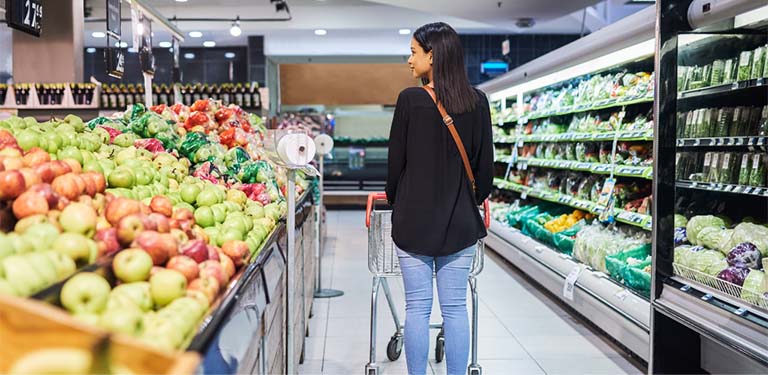
Top Tips
It’s normal to feel worried about changing your diet. When trying some of the tips below, you may like to refer to our advice on monitoring how your body might react – for example, when trying wholemeal instead of white bread.
1. Include a healthy portion of carbohydrate at every meal
Carbohydrates get digested into glucose (sugar) and our body uses this as energy. Not having enough carbohydrates at a meal can cause low blood sugars in those with type 1 diabetes, or who take insulin. Having too much during a meal or snack can cause high blood sugars. Getting the right balance can also help thicken your stoma output.
A portion is roughly the size of one of your fists, or one wrap/tortilla or two slices of bread. Some people with diabetes use carbohydrate counting and give themselves a specific amount of insulin per gram of carbohydrate. If you carb count and are reducing the amount of carbohydrate you consume, you may need to speak with your diabetes nurse about reducing your fast-acting insulin.
We have further portion examples in our downloadable stoma recipe book.
2. Have a balanced meal and don’t eat too quickly
Some foods will increase your blood sugars more than others. If you have a mix of different food groups at your meal it can slow how quick your sugars increase. If you eat slower, your blood sugars may increase at a slower pace too. Taking about 15-20 minutes to eat a main meal is a good pace.
At your meal, aim for each third of your plate or bowl to be:
- carbohydrate such as potatoes or pasta
- protein such as chicken, fish or a vegan/vegetarian alternative
- vegetables such as broccoli (the heads/flowers are easier to digest than the stalks)
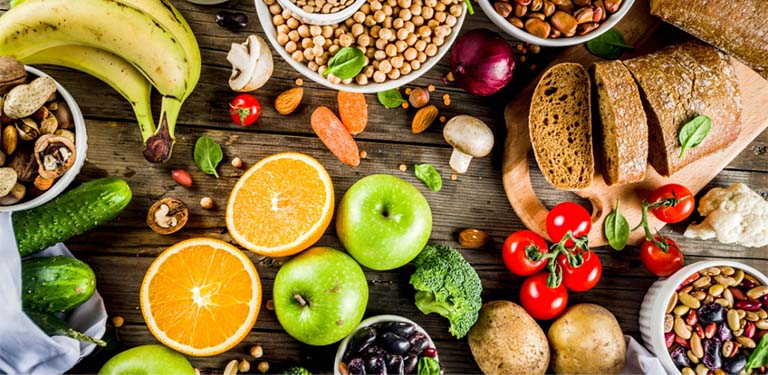
3. Choose higher fibre options as much as you can
Fibre helps slow down the speed that food leaves your stomach, helping you to feel fuller for longer. More fibre means it can take longer for blood sugar levels to increase. Different types of fibre change the texture of your output and how quickly it leaves your body. Having a stoma doesn’t mean you should avoid fibre though. It’s important to chew it well, and gradually add it in.
In the first 6-12 weeks after surgery, it’s recommended to gradually reintroduce fibre. In the first year you may still find your gut is adjusting, it’s worth continuing to experiment.
12 weeks after surgery, aim to eat:
- fruits and vegetables with the skins on where possible (e.g., apples). Avoid very fibrous foods such as celery or pineapple
- wholemeal bread
- wholegrain or wholemeal options such as pasta
- brown rice, couscous, bulgur wheat
- oats – for example, porridge
When first trying options like an apple with its skin, we’d suggest having a smaller amount, eating more slowly, and chewing extra well. Some of these foods may feel more difficult to digest even if you’re chewing your foods well and taking your time to eat them.
Some of the above foods may cause looser stools even if you are chewing your foods well and taking your time to eat them.
If this is the case, you can instead try:
- fruits and vegetables without the skin
- wholemeal bread or ‘best of both’ types
- swapping white potato for sweet potato (with or without the skin)
- swap white rice for basmati rice
See our Nutrition Guide for our low irritant food table, and if you’re unsure about reintroducing higher fibre foods, try using this stoma symptom and food diary
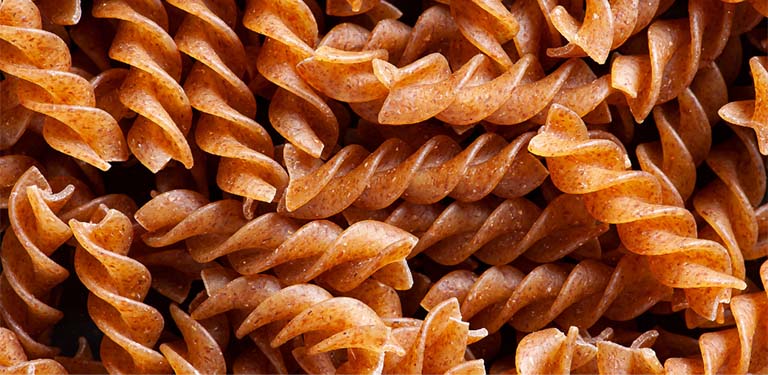
4. Fruit and vegetables: the ‘2 and 3’ approach
Aim for two portions of fruit and three portions of vegetables a day. Fruits are full of nutrition but also contain natural sugars, so it’s good to get the balance right.
To make it easier on your gut, you can:
- chew them very well
- remove the skins of fruits and vegetables if you are unable to digest the skins
- avoid the tough parts of vegetables – for example, eat the broccoli heads but not the stalks
- cook them before eating
- choose less fibrous options – for example, try mango instead of pineapple
Some people may find their gut can’t quite manage 5 portions of fruit and vegetables a day, but instead manage 3 or 4. Your body will have its own preference and experimenting will help you find it.
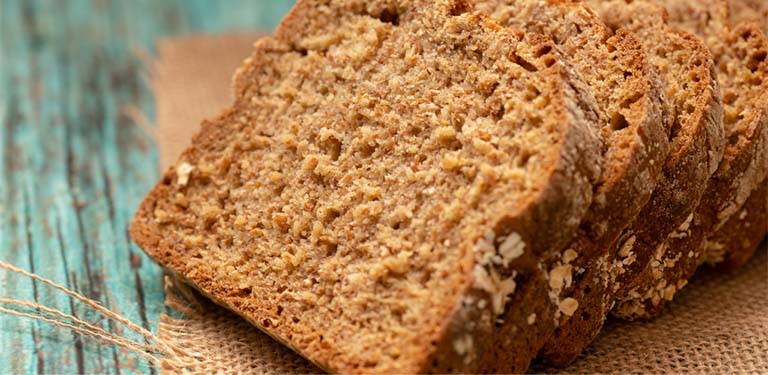
Resources
Information on how to treat a hypo
Diabetes UK – A charity with lots of helpful resources
Ileostomy and Internal Pouch Association– A charity and support source for those with ileostomies and internal pouches
Colostomy UK– A charity and support source for individuals with a colostomy
Registered Dietitian Laura Coster is dedicated to supporting individuals in feeling empowered and at ease while managing their health, all while discovering happiness through the food they enjoy.
 With a background in both NHS and private practice, Laura provides personalised nutrition guidance through one-on-one consultations and engaging nutrition workshops across the UK. Her extensive experience includes holding senior dietitian positions within the NHS, where she has worked closely with patients undergoing stoma-formation surgery.
With a background in both NHS and private practice, Laura provides personalised nutrition guidance through one-on-one consultations and engaging nutrition workshops across the UK. Her extensive experience includes holding senior dietitian positions within the NHS, where she has worked closely with patients undergoing stoma-formation surgery.
